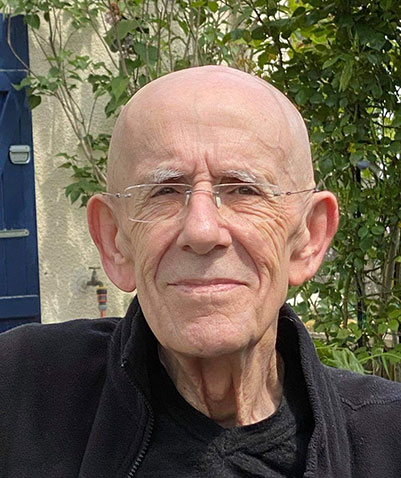Dermatopathology: An Art and a Science – Part 2 A happy interlude
In 1978, I moved from Belfast to London. In those days, crossing the “Big Pond” was a huge deal. I spent the next months as an ad hoc dermatopathology fellow at St John’s Hospital for Diseases of the Skin in Lyle Street just off Leicester Square. In those days, the hospital was surrounded by the red-light district. This was obvious because the narrow frontage of St John’s was adjacent to two brothels complete with red lights! Preparation for my interview with Professor Eduard Wilson-Jones was a nerve-racking experience and I felt that I needed to dress for the part. Head to toe in blue denim with a black knitted tie seemed appropriate and highly fashionable. When I turned up for my appointment, Eduard and Neil were standing at the top of the stairs in the entrance lobby. Neil looked down at me and suggested that I had come to the wrong address and that I really should have gone next door!! That set the stage for what became one of the best periods in my academic life. The staff at St. John’s were warm, kind and friendly and welcomed me into their community. Mind you, it was not all a bed of roses! On my first day, I went into the lab for my inaugural sign-out experience. Eduardo looked up and said “Hi, Phillip, here’s a nice case that you might like to look at. Nothing too difficult”. My heart sank. Failure and disgrace were clearly imminent. I looked down the microscope and saw massive dermal edema and epidermal degeneration. For reasons that are quite beyond my understanding, I blurted out that it looked like Orf. To my intense relief, that was the diagnosis”. To this day, I have no idea why I came to that diagnosis since I had never seen a case.
My days at St John’s included sign-out, studying immunofluorescence, Tuesday evening slide seminars with all of the faculty of St John’s (another very stressful experience), attending clinics and on Saturday mornings we all had to take part in Malcom Grieves’ dermatology Grand Rounds, open to all of the London Teaching Hospitals. Despite being a pathologist, I quite often found myself dragged down to examine a patient and then face a barrage of questions from Malcom generally resulting in utter humiliation. One of the great lessons that I learned early was the need for humility. I might have been a big fish in Northern Ireland dermatopathology but in London I was barely a stickleback!! A monthly highlight was the Dermatology meeting at The Royal Society of Medicine on Wimpole Street. If you haven’t attended one of these meeting, it is difficult to create the atmosphere. Basically, the dermatologists would invite their problematical patients to come to the meeting to see if anyone could come up with a diagnosis or suggest a treatment regimen. I was amazed that patients were happy to come to the meeting and be gazed at, poked and prodded by some many doctors. Mind you, many a patient benefitted enormously from mass diagnosis and so it was a win win situation. Following patient viewing, the residents (dressed in their finery) had to present the clinical findings and pathology in the lecture theatre. This was of great importance as they would be watched carefully by the faculty to see who might be the best fit for the next round of resident appointments. Those were the days!!
During my Fellowship, I gained considerable experience in dermatology which would form a bedrock for my career in dermatopathology.
More to come in Part 3
Biography

Dr Phillip McKee
MB, MD, FRCPath
Dr Phillip McKee MB, MD, FRCPath qualified in medicine in 1972 at Queen’s University Belfast, Northern Ireland. This was followed by pathology training at the Royal Victoria Hospital, Belfast and Membership of the Royal College of Pathologists in 1978. He then completed a Dermatopathology Fellowship at St John’s Hospital for Diseases of the Skin in London. He was appointed to the Faculty of St Thomas’ Hospital Medical School in London in 1979 and subsequently to the Faculty of St John’s Hospital for Diseases of the Skin in 1992. In 1989 he was made Fellow of the Royal College of Pathologists and in 1992 was awarded his Doctorate in Medicine by Queen’s University of Belfast. Read Full Biography
